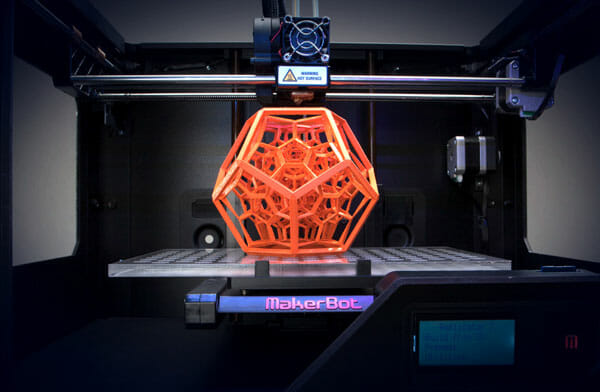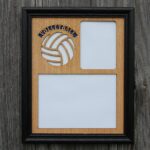
I. Introduction to Custom 3D Printing Cost
II. Factors Affecting Custom 3D Printing Cost
III. Ways to Reduce Custom 3D Printing Cost
IV. Comparison of Custom 3D Printing Costs with Traditional Manufacturing Costs
Introduction to Custom 3D Printing Cost
So, you’ve got a brilliant idea that you want to bring to life through custom 3D printing. Exciting, right? But before you dive headfirst into the world of 3D printing, it’s essential to understand the cost implications that come with this cutting-edge technology.
Custom 3D printing cost can vary depending on a multitude of factors, ranging from the complexity of your design to the materials used. It’s crucial to have a good grasp on these cost factors to ensure that you stay within budget while still achieving the results you desire.
But don’t worry, we’re here to guide you through the ins and outs of custom 3D printing cost. By the end of this article, you’ll be equipped with the knowledge you need to make informed decisions and make the most out of your 3D printing experience.
Factors Affecting Custom 3D Printing Cost
Custom 3D printing can be an exciting and innovative way to bring your ideas to life, but it’s important to understand that the cost of this technology can vary depending on several factors. Let’s dive into the key elements that can impact the price of your custom 3D printing project:
- Material Choice: The type of material used in 3D printing can greatly affect the cost. Some materials, like resin or metal, are more expensive than others, such as plastic. Consider your project requirements and budget when selecting the material for your custom 3D print.
- Complexity of Design: Intricate designs with a high level of detail will require more time and resources to print, which can increase the overall cost. Simplifying your design or opting for a less complex structure can help keep costs down.
- Size of the Object: The size of your custom 3D printed object will directly impact the cost. Larger objects require more material and longer print times, resulting in higher costs. Consider scaling down your design if possible to save on expenses.
- Resolution and Quality: Higher resolution prints with finer details will cost more than lower resolution prints. Determine the level of quality you need for your project and adjust the resolution accordingly to manage costs.
- Quantity of Prints: Ordering multiple copies of the same object can often reduce the cost per unit due to economies of scale. If you require multiple copies of your custom design, consider printing them in bulk to save money.
- Post-Processing Needs: After printing, some objects may require additional post-processing, such as sanding, painting, or assembly. Factoring in these extra steps can impact the overall cost of your custom 3D printing project.
By understanding these key factors that affect custom 3D printing cost, you can make informed decisions to optimize your project within your budget. Remember, it’s always a good idea to consult with a professional 3D printing service provider to get a precise quote tailored to your specific requirements and design. Keep these factors in mind as you embark on your custom 3D printing journey, and you’ll be well-equipped to create amazing and cost-effective projects.
Ways to Reduce Custom 3D Printing Cost
So, you’ve got an awesome custom 3D printing project in mind, but you’re worried about the cost. Don’t fret! There are plenty of ways to reduce custom 3D printing costs without sacrificing the quality of your final product. Let’s dive into some tips and tricks to help you save some money while bringing your creative ideas to life.
- Optimize Your Design: One of the easiest ways to reduce custom 3D printing costs is to optimize your design. By minimizing the amount of material used and eliminating unnecessary features, you can significantly cut down on printing time and material costs.
- Choose the Right Material: Different materials have different costs, so make sure to choose the material that best suits your project while staying within your budget. Some materials may be more affordable than others, so do your research and select wisely.
- Print in Batches: If you have multiple items to print, consider printing them in batches. This can help reduce the overall printing time and costs by maximizing the use of the printer’s capacity.
- Utilize Support Structures Wisely: When designing your 3D model, be strategic about where you place support structures. By minimizing the need for supports, you can reduce material costs and post-processing time.
- Consider Post-Processing Techniques: Depending on your project, you may be able to save money by utilizing post-processing techniques such as sanding or painting. This can help achieve a polished look without the need for expensive materials.
- Explore DIY Options: If you’re willing to put in the time and effort, consider finishing and assembling the printed parts yourself. This can save you money on labor costs and give you a sense of accomplishment.
- Shop Around for Quotes: Don’t settle for the first 3D printing service you come across. Take the time to shop around and compare quotes from different providers. You may be surprised at the cost differences between companies.
- Invest in Your Own 3D Printer: If you have a lot of custom projects in mind, it may be worth investing in your own 3D printer. While the initial cost may be high, the long-term savings on printing costs can be significant.
By following these tips and tricks, you can reduce custom 3D printing costs without compromising on the quality of your projects. Remember, a little bit of planning and creativity can go a long way in saving you money. So go ahead, unleash your imagination, and start creating your next custom 3D masterpiece!
Comparison of Custom 3D Printing Costs with Traditional Manufacturing Costs
When it comes to manufacturing products, cost is always a significant factor to consider. Custom 3D printing has gained popularity in recent years for its ability to create intricate and personalized designs, but how does the cost of 3D printing compare to traditional manufacturing methods?
Let’s break it down:
Materials Cost
One of the key differences between 3D printing and traditional manufacturing is the cost of materials. In traditional manufacturing, materials are often bought in bulk, which can lead to cost savings. However, with 3D printing, materials are used more efficiently since only the exact amount needed is used. This can result in a higher cost per unit for 3D printing materials, but it also reduces waste and can be more cost-effective for smaller production runs.
Labor Cost
Another factor to consider is labor cost. Traditional manufacturing processes often require more manual labor, leading to higher labor costs. With 3D printing, once the design is programmed, the process is largely automated, reducing the need for manual labor. This can result in cost savings in the long run, especially for repetitive or complex designs.
Setup Cost
When it comes to setup costs, traditional manufacturing methods can be more expensive. Tooling and molds need to be created for each new design, which can add significant costs to the production process. In contrast, 3D printing eliminates the need for expensive tooling, making it more cost-effective for producing custom or low-volume parts.
Lead Time
Lead time is another critical factor to consider when comparing 3D printing costs with traditional manufacturing costs. Traditional manufacturing processes often have longer lead times due to the time required to create molds, set up equipment, and manufacture the parts. 3D printing, on the other hand, can produce parts more quickly since there is no need for tooling or setup. This can result in cost savings by reducing production time and allowing for faster turnaround on orders.
Overall Cost Comparison
While the initial cost of 3D printing may be higher than traditional manufacturing in some cases, the overall cost can be more competitive for custom or low-volume production runs. By taking into account materials, labor, setup, and lead time, businesses can make an informed decision on which manufacturing method is more cost-effective for their specific needs.
When considering custom 3D printing costs, it is essential to weigh the benefits of reduced waste, faster production times, and design flexibility against the potentially higher upfront costs. By understanding the differences between 3D printing and traditional manufacturing costs, businesses can make informed decisions that optimize efficiency and cost-effectiveness in their production processes.










Comments